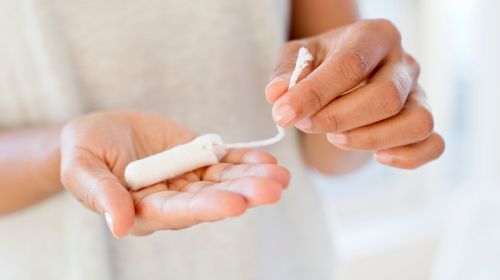In an endometrial biopsy, a tissue sample is taken from the front and back walls of the uterus for a tissue examination. The painless procedure is usually carried out as part of the diagnosis for very specific purposes.
- During an endometrial biopsy, the gynecologist takes a tissue sample from the wall of the uterus.
- © iStock.com / M_a_y_a
Article content at a glance:
What is the endometrial biopsy?
The endometrial biopsy, also called Bar curettage is a gynecological procedure that is carried out as part of a fertility test or if there is a suspicion of pathological changes in the uterine lining.
To do this, a tissue sample is taken from the front and back walls of the uterus in order to examine the tissues. This means that micrometer-thin tissue slices are created from the tissue sample taken and colored in order to then analyze them under the microscope.
Pathological changes, for example uterine cancer (endometrial cancer), myomas or polyps, can be diagnosed and localized with this examination method. To examine fertility, the tissue sample is used to determine the estrogen and progesterone levels in the uterine lining.
Endometrial biospsia not in pregnant women
If an endometrial biopsy is performed, it must be established beforehand that the woman is not pregnant. Otherwise the embryonic development could be disturbed.
Endometrial biopsy is never the first step in diagnosis. Rather, the line curettage is used for other gynecological examinations such as a Pap test ahead. This examination of a cell smear on the cervix is carried out as part of early cancer detection. It provides information about the hormone status, the cycle phase, infections or precancerous stages. However, early detection of degenerate cells in the uterine lining cannot be optimally assessed.
A vaginal ultrasound can provide further information about an irregularly structured mucous membrane.
Endometrial biopsy under or local anesthesia
The endometrial biopsy is usually done in the second half of the cycle. The procedure is performed on an outpatient basis under or local anesthesia. In order to be able to take a tissue sample, the gynecologist has to slightly dilate the cervix. He then inserts a thin, spoon-like instrument (curette) into the uterus through the vagina. With the curette he takes a tissue sample from the mucous membrane.
Depending on the scope of the examination, the uterine lining may also be completely scraped off. However, the scraping has no negative impact on the body and uterus, as the mucous membrane builds up again during the cycle. The procedure takes no more than ten minutes. There may be slight bleeding afterwards.
When is endometrial biopsy used?
The endometrial biopsy has two main focus areas in gynecology. It is used in sterility diagnostics to find out whether hormonal disorders can be a reason for infertility. For this purpose, the hormone content of progesterone and estrogen in the uterine lining is examined. These two hormones cause the lining of the uterus to build up and thus provide the basis for an egg to implant.
If vaginal bleeding disorders are unclear, this can indicate pathological changes in the uterine lining. The causes can be polyps, fibroids or uterine lining cancer. The tissue sample is used to examine whether this suspicion is confirmed and whether it is a benign or malignant change.
Indication for an endometrial biopsy:
- Determination of hormones if sterility is suspected
- Unclear or heavy bleeding
- Post menopausal bleeding
- Detection of degenerate tissue
- Detection of polyps or fibroids
Hardly any pain or complications
The endometrial biopsy is a small, painless procedure with few complications. Nevertheless, improper handling of the instruments can cause injuries to the uterus or the cervix.
Endometrial biopsy is the safest method to detect degenerate cells in the uterine lining. It is often combined with a hysteroscopy (uterine specimen) to take specific tissue samples.
The endometrial biopsy is rarely performed in the context of fertility examinations today. If infertility is suspected, a number of other gynecological examinations and hormone tests are carried out that can provide information about reasons for sterility.



